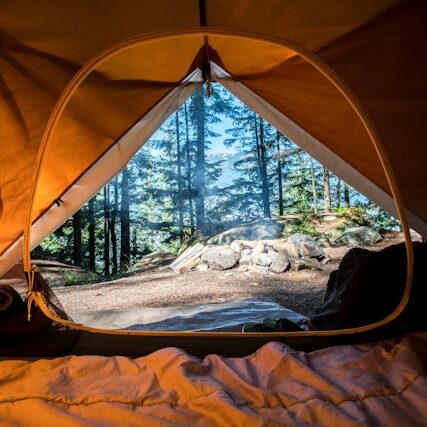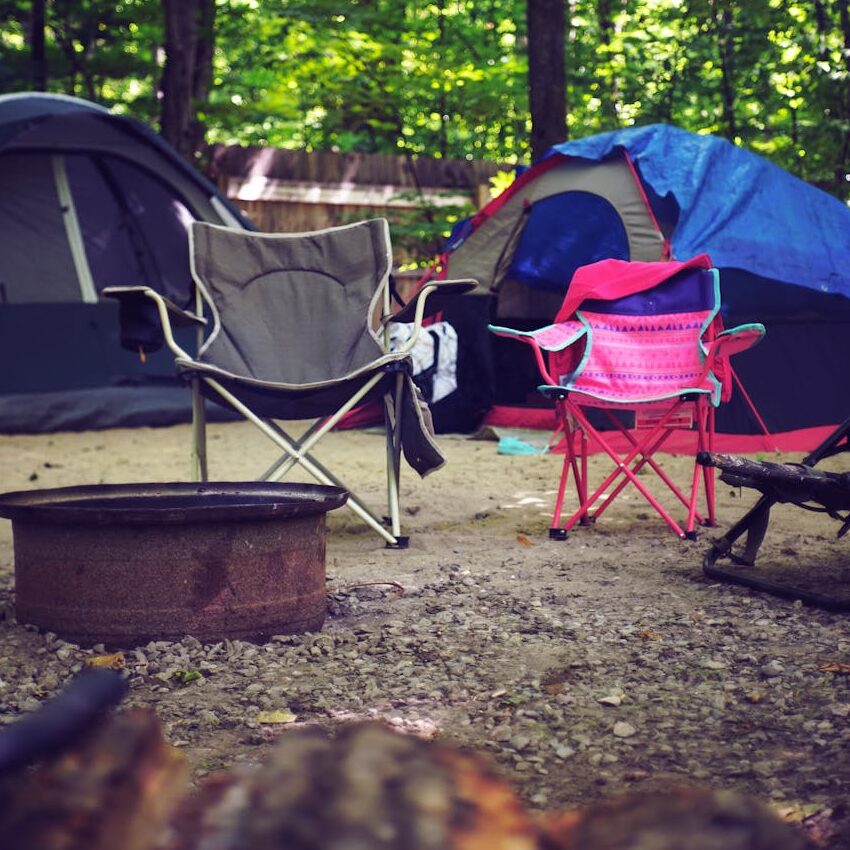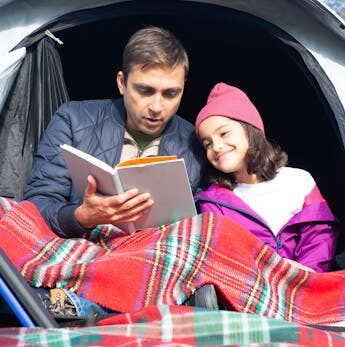
Wild Camping Safety: How to Stay Secure in the Wilderness
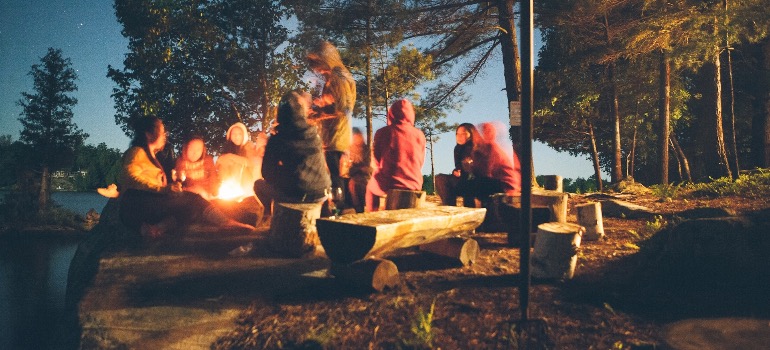
Wild camping provides a unique opportunity to connect with nature, offering serene landscapes and a break from urban hustle. However, diving into such an experience requires thorough preparation. A primary consideration is the importance of wild camping safety. It’s crucial for preventing potential hazards and ensuring an uninterrupted and rewarding experience in the wilderness. Safety precautions pave the way for a more relaxed and enriching adventure.
The Importance of Picking the Right Spot
Choosing the right camping spot is foundational to your safety and overall experience. Setting up near cliff edges might provide breathtaking views, but it’s risky due to unstable ground or sudden wind gusts. Areas prone to flooding, even if they seem dry upon arrival, can quickly become dangerous with rain. Additionally, it’s wise to avoid spots near animal trails or nests, which can lead to unwanted encounters. Look for signs of frequent animal activity or potential hazards. A flat, open space away from potential dangers and a safe distance from water sources is often the ideal choice.
Fire Safety
Campfires often stand as a hallmark of the camping experience, providing warmth, light, and a means to cook. However, their management requires careful attention. Selecting an appropriate spot away from trees and shrubs minimizes the risk of spreading unintended fires. Small fires, easier to control and extinguish, should be the norm. It’s essential always to have water or sand nearby to put out flames quickly if needed. Leaving a fire unattended, even briefly, can have severe consequences. Ensure the fire is fully extinguished before sleeping or leaving the site.
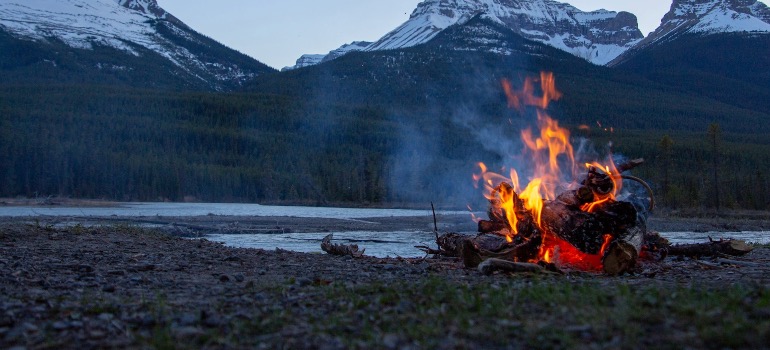
Make sure to follow proper campfire practices when wild camping.
Food Storage and Safety
Ensuring proper food storage is imperative for wild camping safety, not just for the longevity of your supplies but also to prevent attracting wildlife. Areas known for bears require special attention: bear canisters or bear bags are essential to keep food securely stored and out of their reach. Food and toiletries should be stored away from the sleeping area to deter smaller animals, even in regions without bears. Ideally, food should be hung at least 10 feet off the ground and 4 feet away from any tree trunk as a barrier against curious critters.
Proper Hydration
Staying adequately hydrated is crucial during any outdoor activity, especially wild camping. Relying on natural water sources comes with risks; untreated water may harbor harmful pathogens. Therefore, always purify water from streams, lakes, or rivers using filters, boiling, or chemical treatments. Additionally, being equipped with proper outdoor cooking gear facilitates safe food preparation and assists in boiling water when needed, adding an extra layer of safety. It’s also beneficial to research the area you’re visiting to know the availability and location of water sources, ensuring you’re never short of this vital resource.

A big aspect of wild camping safety commonly overlooked is staying hydrated.
Navigating the Terrain
The vastness and unpredictability of the wilderness make navigation paramount for anyone heading out for wild camping. Familiarizing yourself with the area’s topography through maps is an initial and vital step. While digital tools like GPS devices offer significant assistance, relying solely on them is risky, given battery constraints and potential signal loss. The traditional map and compass should be primary tools complemented by technology. Before your adventure, it’s prudent to inform a trusted person about your itinerary. That creates a safety backup, ensuring someone knows your whereabouts and expected return, reducing risks in unexpected situations.
Weather Awareness
Weather, especially in the wilderness, can change rapidly and without much warning. Proper preparation begins with thoroughly checking weather forecasts for your intended camping area. That helps pack appropriate gear, alerts you to potentially severe conditions, and prepares you for wild camping safety. Since forecasts can sometimes miss localized weather patterns, observing the environment is wise. Signs like darkening clouds, sudden drops in temperature, or increasing winds can indicate incoming storms. Carrying weather-resistant gear and understanding how to respond to various conditions, such as lightning or heavy rain, are essential for maintaining safety during your camping adventure.
Respecting and Avoiding Wildlife
Wildlife encounters can be one of the most memorable aspects of wild camping, but they also present certain risks. Knowledge of the local fauna is vital. That means recognizing which species are common in the area, their habits, and how they might react to human presence. Maintaining a respectful distance and avoiding feeding or provoking any animals is essential. Noises, whether clapping or talking loudly, can help alert animals to your presence, reducing the chance of surprise encounters. Understanding specific safety protocols can make the difference between a safe observation and a hazardous confrontation in regions with potentially dangerous animals, like bears or snakes.

Remember to respect and avoid local wildlife for their safety and your own.
Emergency Preparedness
While wild camping can offer serene moments of connection with nature, it’s imperative always to be prepared for potential emergencies. A well-stocked first-aid kit tailored to your destination’s challenges is a must-have. Basic first-aid knowledge is also essential for safety during outdoor adventures. Communication tools, like a whistle or satellite phone in remote areas, can be invaluable for signaling distress. Familiarize yourself with emergency evacuation routes and the location of the nearest medical facilities.
Protect Your Gear
Faulty gear equates to a camping hazard. That is why properly storing and protecting it off-season is so important. Storing outdoor gear properly during the off-season is essential to ensure its longevity and performance for future adventures. When the time comes to put away your gear, starting with a thorough cleaning is crucial. Tents, sleeping bags, and other equipment should be free of dirt, moisture, and any food residue.
Any dampness can lead to mold or mildew growth, compromising the gear’s material and health safety. Once cleaned, store items in a cool, dry place. Avoid areas with extreme temperature fluctuations, as this can weaken certain materials over time. Use large storage sacks instead of compression bags for items like sleeping bags to maintain loft and insulation properties. Proper storage protects your investment and ensures you’re ready to embark on your next camping adventure without any hitches.
Leaving No Trace
Camping brings joy, and with that joy comes the responsibility of preserving the environment for future generations. Adopting a “Leave No Trace” philosophy is paramount. That means removing all trash, avoiding the creation of new fire pits, and minimizing disturbances to the natural surroundings. Opt for camping stoves instead of open fires, as they’re less impactful on the environment. If camping with family, properly preparing your kids is essential, teaching them the importance of conservation and responsible camping habits. By respecting nature and instilling these values in younger campers, we ensure that the wilderness remains pristine for years.
Final Thoughts
Wild camping offers an unparalleled immersion into nature, a chance to disconnect from daily routines and reconnect with the world in its raw form. However, with this privilege comes the duty to ensure wild camping safety. Proper preparation, awareness, and environmental respect are foundational pillars for a successful camping adventure. As we venture into the wilderness, we must harmonize with the land, wildlife, and weather conditions. By adopting these safety guidelines, we pave the way for our own well-being and the preservation of these beautiful landscapes for generations to come. Safe and responsible camping is the path to truly enriching experiences.


